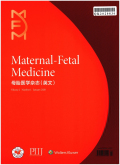- 钛学术文献服务平台 \
- 学术期刊 \
- 医药卫生期刊 \
- 妇产科学与儿科学期刊 \
- 母胎医学杂志(英文)期刊 \
Management of Hypertension in Pregnancy
Management of Hypertension in Pregnancy
基本信息来源于合作网站,原文需代理用户跳转至来源网站获取
摘要:
Hypertension in pregnancy is currently defined as a systolic blood pressure (BP) of 140 mmHg or more, or a diastolic BP of 90 mmHg or more. This level of BP warrants antihypertensive therapy. Treating to a target BP of 135/85 mmHg halves the risk of severe hypertension that is itself associated with adverse maternal and perinatal outcomes, similar in magnitude to preeclampsia. While based on the results of the Control of Hypertension in Pregnancy Study (CHIPS) trial, this finding is consistent with all antihypertensive trials to date. Also, in the CHIPS trial, "tight" BP control also halved the risk of progression to thrombocytopenia and elevated liver enzymes for the mother, without adverse effects for the fetus or newborn. This was true regardless of the gestational age at which BP control was instituted. While methyldopa, labetalol, and nifedipine are the most commonly-recommended oral antihypertensives, it is not clear that one antihypertensive agent has advantages over the others for treatment of non-severe hypertension in pregnancy. No antihypertensives, including renin-angiotensin-aldosterone system (RAAS) inhibitors, have been shown to be teratogenic, although there may be an increase in malformations associated with the underlying condition of chronic hypertension. Atenolol and RAAS inhibitors should not be used once pregnancy is diagnosed, based on fetotoxicity. At present, BP treatment targets used in clinic are the same as those used at home as the differences are quite variable among hypertensive women. For treatment of acute severe hypertension, the most commonly-recommended antihypertensives are oral nifedipine, IV labetalol, and IV hydralazine, although oral agents have also been shown to be effective in the majority of women; while concerns raised about IV hydralazine-induced maternal hypotension and its consequences have not been confirmed, this medication may be an inferior antihypertensive to oral nifedipine. While treatment recommendations are based on evidence, women should be engaged in decision-making, as their values may alter target BP and antihypertensive choice. Future work will clarify the optimal target BP based on home BP measurements; whether BP targets should be lowered further if the definition of hypertension is based on a lower BP; which, if any, antihypertensive medication for non-severe hypertension is better with regards to maternal and perinatal outcomes; and whether factors beyond BP level (such as variability, race, and other physiological variables) should inform antihypertensive therapy in pregnancy.

推荐文章
重度妊娠期高血压疾病并发肾病综合征11例临床观察与护理
妊娠期高血压疾病并发肾病综合征
临床观察与护理
妊娠高血压综合征患者体内TNF-α、NO、SOD的变化及相互关系
妊娠高血压综合征
肿瘤坏死因子α
一氧化氮
超氧化物歧化酶
基于WS-Management的管理系统的设计与实现
WS-Management
基于Web的企业管理
Windows管理接口
内容分析
关键词云
关键词热度
相关文献总数
(/次)
(/年)
文献信息
| 篇名 | Management of Hypertension in Pregnancy | ||
| 来源期刊 | 母胎医学杂志(英文) | 学科 | |
| 关键词 | Hypertension Antihypertensive therapy Maternal outcomes Perinatal outcomes Pregnancy Severe hypertension | ||
| 年,卷(期) | 2021,(2) | 所属期刊栏目 | Review |
| 研究方向 | 页码范围 | 124-135 | |
| 页数 | 12页 | 分类号 | |
| 字数 | 语种 | 中文 | |
| DOI | 10.1097/FM9.0000000000000095 | ||
五维指标
引文网络
引文网络
二级参考文献 (0)
共引文献 (0)
参考文献 (0)
节点文献
引证文献 (0)
同被引文献 (0)
二级引证文献 (0)
2021(0)
- 参考文献(0)
- 二级参考文献(0)
- 引证文献(0)
- 二级引证文献(0)
研究主题发展历程
节点文献
Hypertension
Antihypertensive therapy
Maternal outcomes
Perinatal outcomes
Pregnancy
Severe hypertension
研究起点
研究来源
研究分支
研究去脉
引文网络交叉学科
相关学者/机构
期刊影响力
母胎医学杂志(英文)
主办单位:
中华医学会
出版周期:
季刊
ISSN:
2096-6954
CN:
10-1632/R
开本:
16开
出版地:
北京西城区东河沿街69号303室
邮发代号:
创刊时间:
2019
语种:
chi
出版文献量(篇)
122
总下载数(次)
0
总被引数(次)
2
期刊文献
相关文献
推荐文献

 免费查重
免费查重










